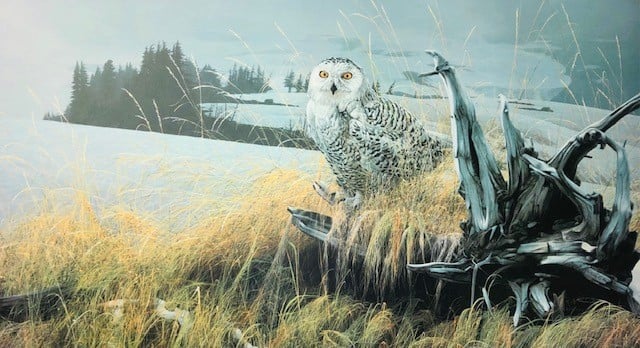Tundra Watch
Inhabitants of the north have had to adapt to life in a world of extremes. While the season changes gradually in the areas between the Poles and the Equator, the Arctic can change in just a few weeks.
With a circumpolar distribution the snowy owl has been able to enjoy life in some of the most barren places. He is large, an adaptation shared by many arctic animals to conserve body heat. Although most owls are nocturnal, the arctic summer provides little darkness so the snowy may be active around the clock. They prefer open country where they often perch conspicuously on low tree shags or rock outcroppings.
At times they can be seen dotting the tundra as they wait from their vantage point for lemmings. In years when lemming populations are low, many owls are forced to move much further south in search of food. This migration out of their normal range takes place almost consistantly every four or five years. These "flight years" often bring in reports of snowy owls well south in more temperate climates. In the lower latitudes, however, they must compete more heavily with other bird species for food so they generally are not around for long.

